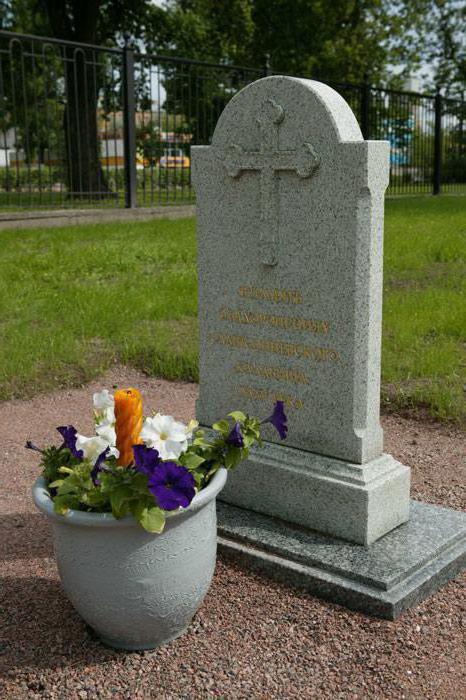The Vyborg side is the historical part of St. Petersburg, named after the old highway leading to Vyborg. It was here that one of the first medical institutions of the city arose in its initial period - a land and marine hospital, on the site of which is now the Military Medical Academy. And further from the Neva River, near the place where the Vyborgskaya station is now located, the Sampson Church was built. It was with her that the story of the place where the Sampsonian Garden is now organized has begun.
St. Petersburg, St. Sampson Church
In 1709, in honor of the victory near Poltava, a wooden church was erected on the right bank of the Neva. In 1710, it was consecrated in the name of St. Sampsonius - the patron saint of wanderers, sick and poor. Nearby were opened two hospitals - marine and land. Their patients needed the protection and help of St. Sampson.
The first St. Petersburg cemetery was organized near the church, where the famous builders of the "original" St. Petersburg were buried: Domenico Trezzini, Andreas Schluter, Jean Baptiste Leblon, as well as the famous sculptor Carl Bartolomeo Rastrelli. Unfortunately, this cemetery has not been preserved to this day. Next to the Gentile was the Orthodox cemetery, which was founded at the same time. It also has not been preserved. It is believed that the initiator of the destruction of the graves was Catherine II herself.

The stone temple was laid on the site of a wooden church in 1728, possibly according to the design of D. Trezzini. Subsequently, Sampsonievskaya Church was rebuilt several times. Its author is called Pietro Trezzini. A memorial plaque with the text of the speech of Emperor Peter Alekseevich before the Battle of Poltava is placed on the facade of the bell tower of Sampsonievsky Church. In addition, after the construction of the temple, particles of the relics of St. Sampson were transferred from a wooden church to it.
Near the fence facing the Great Sampsonievsky Avenue, there is a unique grave. The tombstone says that the remains of those accused of conspiracy, executed by order of Empress Anna Ioannovna: Minister Artemy Petrovich Volynsky, architect Pyotr Mikhailovich Eropkin and one of the secretaries of Volyn Khrushchev are laid to rest there.
Toponymy of the area around Sampsonievsky Garden
The area around Samsonievsky Garden is limited by Bolshoy Sampsonievsky and Forest Avenues, Grenadier Street and Neyshlotsky Lane.
Lesnoy Avenue has been named since 1913 under the name of the Mezhevoy (later - Lesnoy) Institute, which he passed by. Therefore, the previously part of the highway adjacent to the institute was called Megeve Street, which later merged with the other part of the avenue - Nyustadt (in the city of Nishtadt, where the Nistad Peace Treaty was signed with the Swedes in 1721), forming a single avenue. According to the same principle, Neyshlotsky Lane was named.
Bolshoi Sampsonievsky Prospect is a street that goes from the Neva to Sampson Cathedral and gets its name from it.
Grenadier Street passes through the lands that previously belonged to the Grenadier Regiment, which is why it got its name.
History of Sampsonievsky Garden
The garden was founded in 1927 on the site of one of the disappeared cemeteries and named after Karl Marx, the ideologist of Marxist theory. This name was kept outside the square until 1991, after which the site was renamed Sampsonievsky in the temple located nearby.
In memory of the lost burials in the garden in 1995, a monument to the "first builders of St. Petersburg" was erected according to the project of Mikhail Shemyakin.
Made of granite, it resembles a portal to the entrance to the Gothic temple. The names of the architects to whom it is dedicated to A. Schluter, D. Trezzini, J. B. Leblon, B. K. Rastrelli and F. B. Rastrelli are engraved on its plates.
An interesting world of wildlife represented in the garden and being its true decoration: a false-plane maple from the forests of the Caucasus, a red oak from North America. Of the birds here you can find not only sparrows, but waxwings.
Due to the appearance of Grenadier Street in the 1970s, the size of the garden decreased significantly.
Recalling the past
In the summer of 2017, Sampsonievsky Garden became a place where panoramas of historical events unfolded, three at once: the Battle of Poltava, the Battle of Neva and the June offensive of 1917 in World War I.
The Battle of Poltava was represented by the reconstruction of one of the fragments of the event - the Battle of Lesnoy, which is very symbolic if you recall that one of the highways near the garden is Lesnoy Avenue. In addition to the reconstruction of these battles, platforms were arranged where residents could practice martial arts - throwing knives, axes, archery and crossbow, or go to the shooting range. Represented in the garden were models of military artillery weapons.
The historical festival in Sampsonievsky Garden "For Russia and Russian Piety" was dedicated to the Day of Military Glory. It has been held for the third year in a row.
How to get to Sampsonievsky Garden in St. Petersburg?
The easiest and most reliable way is by metro to the Vyborgskaya station.
You can also get by land. If you go from the area of the metro station "Academic", "Civil Prospect" and from Prospect Enlightenment - bus number 60.
Also here are bus number 86 and tram number 20.